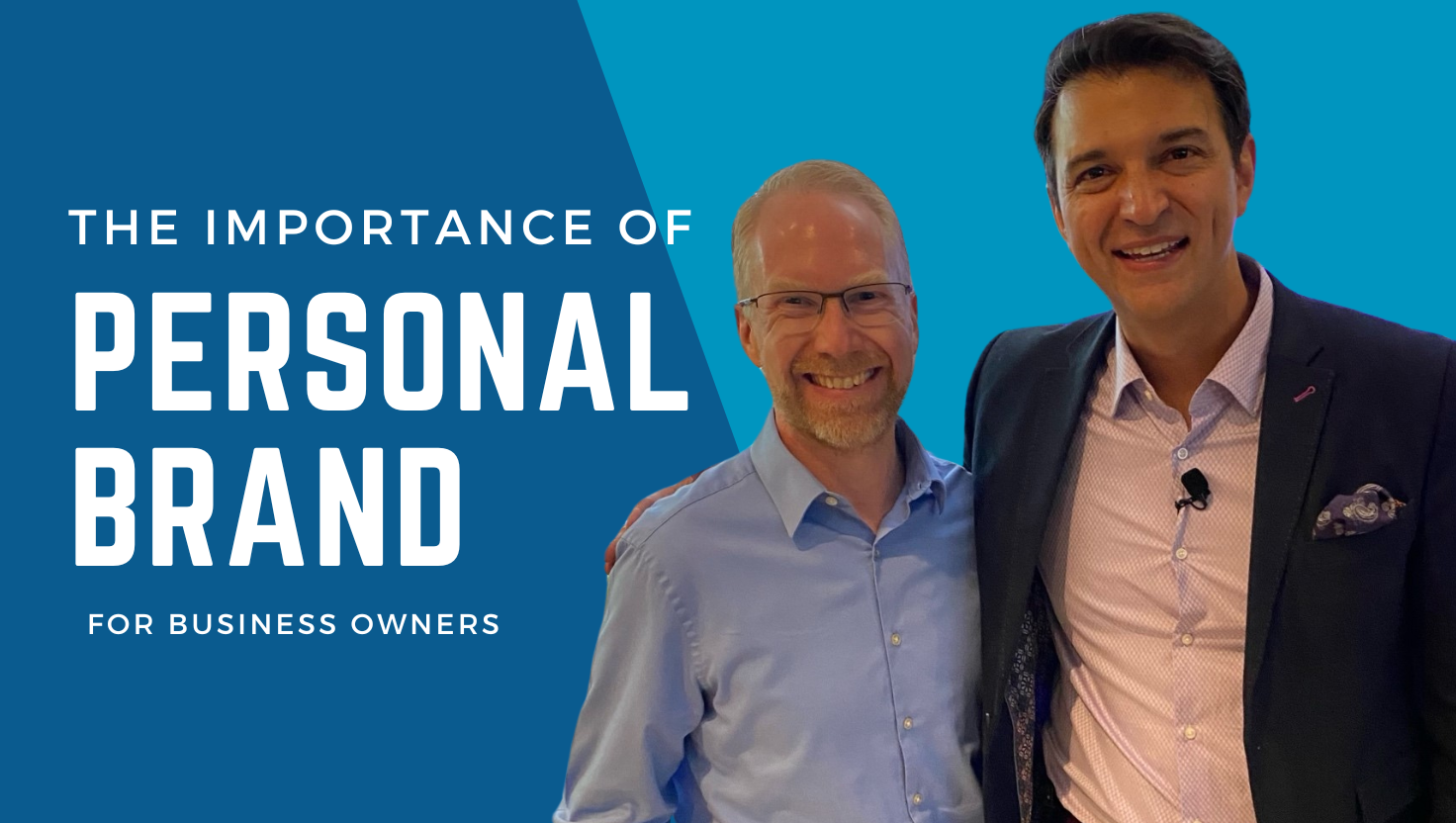
by Nathan Whittacre
At a recent presentation I attended titled "The Influential Personal Brand: How To Turn Your Reputation Into Revenue," Rory Vaden, a leading expert on the psychology of influence, shared valuable strategies for small business owners looking to turn their reputation into a business asset. His insights underscore the importance of building a personal brand in today's competitive marketplace and provide a practical roadmap for doing so. I found the presentation especially interesting since I’ve been working on building my personal brand of authority and expertise in the technology space through writing, podcasting, and speaking engagements. I realized that I have much more to do to develop an effective personal brand and appreciated the insights he presented.
What Is a Personal Brand?
Vaden defines a personal brand as more than just social media profiles, logos, or content. It’s about the digitization of your reputation—essentially, what people think of when they hear your name. While we often associate branding with activities like having a YouTube channel or writing a book, Vaden emphasizes that true branding goes deeper. It’s about the trust and consistency you build over time.
For small and medium-sized business owners, establishing a personal brand isn't just about recognition; it’s a key factor in building trust. Nearly three-quarters of Americans are more likely to trust individuals who have an established personal brand, with Millennials being the most inclined (85%) to place their confidence in a well-known individual. This trust is even more crucial in fields where expertise and credibility are highly valued, such as healthcare, law, and consulting.
Why Most Personal Brands Struggle to Gain Traction
One significant challenge Vaden highlighted is "Sheahan's Wall," a concept that explains the divide between being unknown and achieving notoriety. Many brands struggle because they lack cohesion—spreading themselves across too many topics, audiences, and platforms without a consistent message. This diluted focus often leads to diluted results.
To overcome this barrier, Vaden recommends zeroing in on what makes you unique. As he quoted Larry Winget, "Find your uniqueness and exploit it in the service of others." The starting point for building a brand is answering one key question: What problem do you solve? When you know your purpose and align your messaging accordingly, your content and business strategy can cut through the noise more effectively.
After listening to him present his research on this topic, I realized that this is one of my issues with gaining traction of my personal brand. If you go to my personal Facebook page, you’ll see a smattering of technology topics, mixed in with vacations, cooking, flying, and racing. All these things are worthwhile to me (and for my mom to see) – but don’t present a focused personal brand.
Sell the Problem as Much as the Solution
Vaden emphasized the importance of selling the problem, not just the solution. He pointed out that the most impactful personal brands are those that not only provide answers but also become ambassadors of the problems they solve. By sharing stories of your own experiences and challenges, you build credibility and empathy. After all, you are uniquely qualified to help solve a problem you have faced yourself.
Connecting emotionally with your audience is one of the most powerful ways to establish your brand. This emotional connection fosters trust, as customers begin to see you not just as a vendor but as someone who understands their struggles and genuinely wants to help them succeed.
Building Trust: A Cornerstone of Personal Branding
According to Vaden, the number one factor influencing purchasing decisions is the presence of testimonials about an individual and their work. Additionally, people are more likely to buy from someone who is paid to advise on or speak about their topic of expertise. This positioning not only adds credibility but also signals that you are a trusted expert in your field.
To build trust, Vaden outlined three key strategies:
- Let People See You: Use social media to show what you do, not just who you are. Focus on content that’s entertaining, encouraging, and educational. Authenticity is key; people want to know the real you, not just the polished version.
- Let People Know You: Share your personal stories, values, and experiences. Vaden stressed that storytelling should focus on the person behind the brand—what challenges you’ve faced, what you’ve overcome, and what you’ve learned. These stories resonate because they demonstrate your journey and provide inspiration.
- Let People Learn From You: Educate your audience through valuable content. Vaden’s "Content Diamond" strategy suggests starting with one core piece of content, such as a 6-minute video, and then repurposing it across various platforms to maximize its impact.
The Content Diamond: A Framework for Maximum Impact
One of the practical strategies Vaden shared is the "Content Diamond," which involves creating one piece of valuable content and distributing it in multiple formats. Here’s how it works:
- Start with a 6-Minute Video: Address a question that resonates with your audience. For example, I might ask, “Have you ever wondered why small businesses struggle to control their IT costs?” The video should explain why the question is important, common mistakes to avoid, and practical steps to take.
- Break Down the Content: Repurpose the video content into smaller pieces:
- Transcriptions and key quotes for platforms like Instagram, LinkedIn, or Twitter.
- A blog post that expands on the video topic.
- Short-form videos for YouTube Shorts, TikTok, or Instagram Reels.
- Organize and Apply: As Vaden noted, people don’t pay for information; they pay for the organization and application of that information. Offer your best advice for free, but structure your services around customized solutions and actionable guidance.
Personal Branding Is About Service, Not Vanity
Vaden dispelled the myth that personal branding is about self-promotion or vanity. Instead, it’s about service—who you serve and how you make a difference. Even if someone never becomes a customer, your personal brand can still impact them positively.
To adopt a service-centered mindset, Vaden encouraged business owners to reflect on these questions:
- What challenges have you conquered? Use these experiences to teach others who are facing similar obstacles.
- What setbacks have you survived? Sharing your story of resilience can motivate others.
- What obstacles have you overcome? Demonstrating how you navigated these challenges can provide a roadmap for your audience.
Serving the Greater Mission
Ultimately, Vaden emphasized that personal branding is about answering a call to serve. It’s not about fame or accolades; it’s about making a difference in the lives of others. When you shift your focus from self-promotion to serving a mission, fear fades away because the purpose becomes clear.
I feel that building a personal brand seems daunting, but I found that the key takeaway from Vaden’s presentation is that progress matters more than perfection. By consistently providing value, sharing my story, and connecting emotionally with you (my audience), I hope to turn my reputation into a powerful business asset.
Want to learn more about building a personal brand? Check out our episode of Stimulus Tech Talk Featuring featuring brand expert Lisa Shorr.







